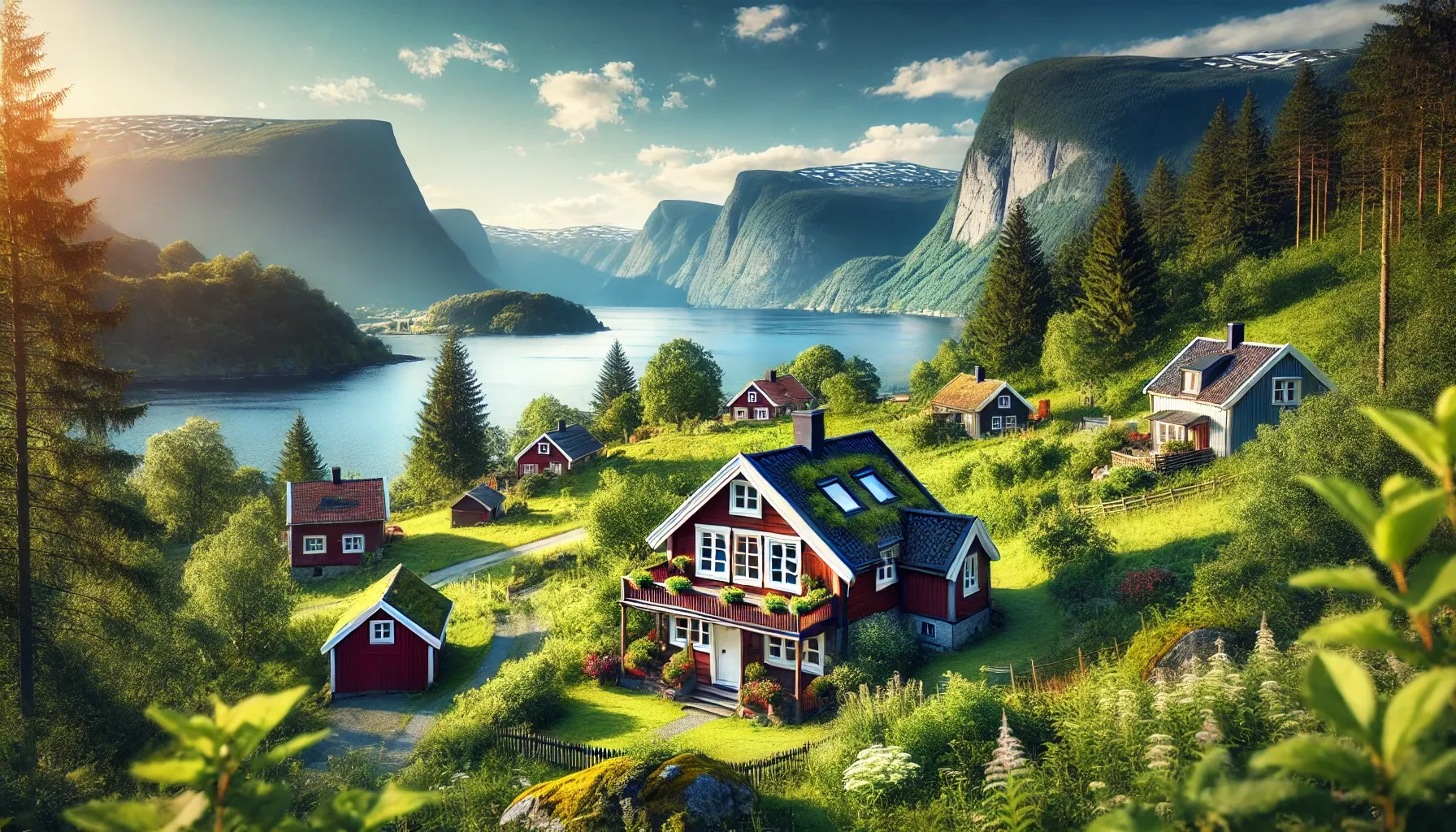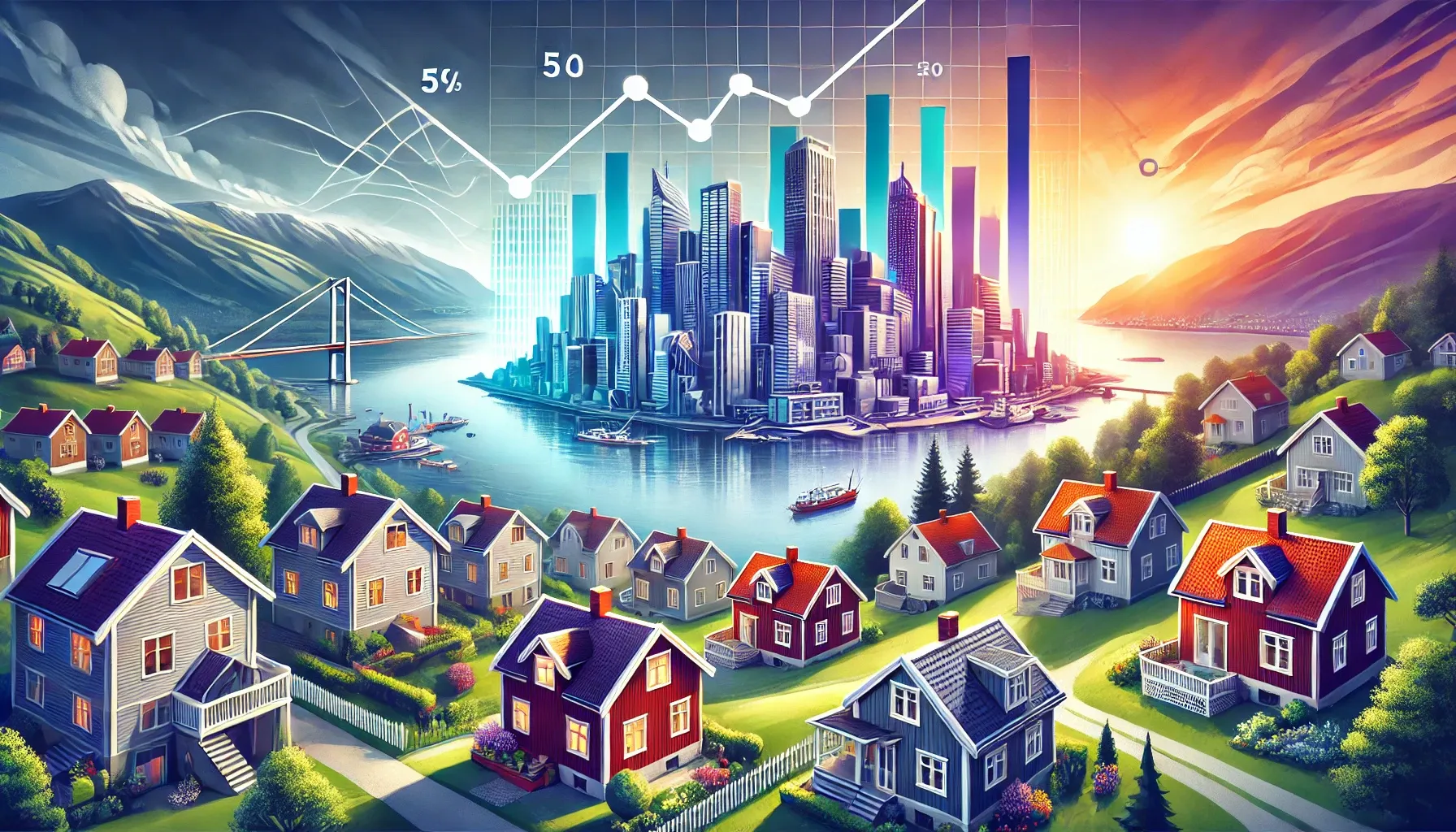Buying real estate in Norway: advantages and disadvantages for foreigners

- Why does Norway attract real estate investors despite high prices?
- What are the current trends in the housing market in Norway?
Real Estate in Norway: Affordability and Market
In Norway, there are no restrictions on the purchase or rental of real estate by foreign citizens. The cost of housing in this country has shown steady growth over the past few years. Although during the financial crisis of 2008, prices slightly decreased, they quickly recovered afterwards.
Despite the high real estate prices, it is possible to find affordable options in various parts of the country, especially in remote villages. Many people looking to settle in urban areas choose apartments for themselves, as high rental costs make purchasing their own home more advantageous.
Reasons for the Low Interest of Russian Investors
Despite all its attractive features, Norway is not considered a particularly popular destination for real estate investment among Russians. This is influenced by a number of factors:
- Lack of visa privileges:The purchase of real estate by foreign citizens does not provide any advantages in obtaining a visa.
- High taxes:Norway has some of the highest property tax rates.
With a population of about 5 million people and an area of about 385,000 square kilometers, the country is considered one of the least populated countries in Europe. Most of the inhabitants are concentrated in the southern part, and according to statistics, about 570,000 people live in the capital, Oslo. Large cities such as Stavanger, Bergen and Trondheim together account for about 25% of the country's total population, which corresponds to approximately 1.2 million people.
Norway's Economy: Key Areas
The main currency of Norway is the krone. Since the early 1960s, the oil and gas industry has been actively developing in the country, allowing Norway to take a leading position in oil and gas production in Northern Europe. Previously, the main sectors of the economy were fishing and shipping.
For several years, Norway has ranked high in global quality of life rankings. This country is considered one of the wealthiest in the world, and its capital, Oslo, was named the most expensive city for foreigners to live in 2013.
Transport and Communication with Russia
As for transportation, several airlines offer direct flights from Russia to Norway. For example, Aeroflot Airlines launches flights from Moscow to Oslo up to five times a week. Norwegian Airlines provides two flights per week between St. Petersburg and Oslo, while Nordavia offers routes from Arkhangelsk and Murmansk to Tromsø.
Stability of the Real Estate Market
The Norwegian real estate market is known for its reliability and stability. Like in many other Scandinavian countries, it showed resilience during the 2008 crisis. The continuous rise in housing prices in Norway is driven by the high incomes the country earns from the oil and gas sector.
The demand for residential real estate significantly exceeds the supply. The period from 2004 to 2007 was record-breaking in terms of growth rates in the real estate market, when the demand was particularly high and prices were rapidly rising, making it even more attractive for investors. From 2005 to 2006, the market continued to show impressive activity.
All these factors indicate that Norway remains an attractive destination for those planning to invest in real estate, despite some existing challenges and restrictions.
General overview of housing price growth in Norway
In Norway, there has been a steady increase in housing prices in recent years, averaging about 10% per year.
9 October 2024
29 September
9 October 2024


According to Norges Eiendomsmeglerforbund, in February 2009, the average cost per square meter in Oslo was 4,500 euros. Today, housing prices in Norway have returned to pre-crisis levels.
The cost of rural real estate
As for rural real estate, the current prices range from 500,000 to 700,000 euros, which corresponds to a price per square meter of 4,000 to 5,000 euros. The main differences in prices depend on the location: properties with panoramic views of the fjords are significantly more expensive, while in the northern regions of the country, they are cheaper, but interest in them is noticeably lower.
As of December 2012, the price per square meter in the country had increased by 8.8% over the year. During this time, the market showed a price increase for apartments of 10.2%, while prices for houses rose by 6.4%.
Current trends in the housing market
Currently, the annual increase in housing prices is around 8%, which raises concerns among authorities about a potential market overheating. Some analysts believe that housing prices in Norway are 15-20% above fair market value. Statistics show that the growth in real estate prices in the country is outpacing the increase in citizens' incomes by two times.
At the same time, the financial group Nordea notes that in 2013, housing prices increased by 41% compared to December 2008 and by approximately 25% compared to the summer of 2007, when prices reached record levels. Experts' forecasts indicate that next year, the rate of growth in housing prices will be:
- 2016 year:6.8%
- 2017 year:6,2%
- 2018 year:5.9%
Geography of supply and price differences
In terms of supply geography, the highest housing prices are recorded in Oslo and the country's major cities, while in rural areas, especially in small towns, the cost of real estate is significantly lower. Foreign investors are showing interest in buying housing, mainly in Oslo, Bergen and Stavanger.
In the capital, the cost of housing varies significantly depending on the district.
- In the prestigious Frogner district, known for its 19th-century architectural landmarks, the price per square meter is approximately 6,900 euros.
- In a more affordable area of Grünerløkka, the price is around 4600 euros.
- New construction projects in Oslo are typically valued at an average of 7,500 euros per square meter.
Two-bedroom apartments of 125 square meters can be found in the capital in the range of 800,000 to 900,000 euros.
Prices in Bergen and Stavanger
In the second largest city in Norway, Bergen, the price per square meter ranges from 3,500 to 3,900 euros in the outskirts to 6,500 euros in the city center. In Stavanger, central apartments cost around 5,600 euros per square meter, while prices in the outskirts can reach 3,700 euros per square meter.
Studying the dynamics of the local market, one can conclude that it is actively developing, offering both local and foreign buyers a wide range of investment opportunities in housing.

Conclusion
In conclusion, it is worth emphasizing that the real estate market in Norway offers numerous opportunities for foreign buyers, despite certain restrictions and peculiarities. The welcoming attitude towards foreign investments, the absence of strict prohibitions on the purchase and rental of housing create a positive environment for those looking to acquire property. The continuous price growth observed in the market also signals stability and attractiveness of this sector for investments.
I realize that for many Russians Norway is not an obvious choice due to high taxes and lack of visa benefits, but it is certainly worth considering this market as an alternative. The peculiarities of the country's geography and socio-economic situation make it unique, and the ability to find more affordable housing options in small villages or suburbs can be a real boon for those looking for a quiet life away from the bustling metropolis.
Priorities for buyers
It is also important to note that the history of the Norwegian real estate market demonstrates its ability to recover after economic crises, which is a significant advantage for investors. If you are attracted by the opportunity to acquire your own home in one of the most developed countries in the world, then Norway, with its unique blend of nature and high living standards, could be the perfect choice for you. Based on statistics, it can be expected that the growth of housing prices in Norway will continue its positive trend, which in turn may increase interest from both local and foreign buyers.
Key points to consider:
- No restrictionsfor the purchase of real estate by foreigners.
- No visa benefitswhen purchasing real estate.
- High level of taxeson real estate.
- Available housing optionsin small villages.
- The market's ability to recoverafter the crises.
- Continuation of price growthfor housing in the future.
Ultimately, everyone should consider their personal circumstances, financial capabilities and preferences before deciding to purchase real estate in Norway. It is important to remember that such an investment is not only a financial investment, but also a lifestyle choice that will be a source of joy and comfort for you.
Comment
Popular Posts
9 October 2024
9932
29 September
339
9 October 2024
1484
Popular Offers

Subscribe to the newsletter from Hatamatata.com!
Subscribe to the newsletter from Hatamatata.com!
I agree to the processing of personal data and confidentiality rules of Hatamatata







